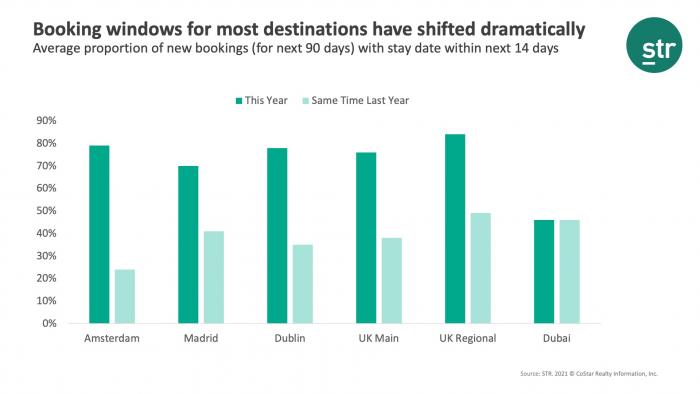How have booking windows shifted during the pandemic? Are the shifts momentary blips or the new norm?
In this article, we use case studies and market-specific snapshots to answer those questions and discuss considerations for hotels competing for short-lead business.
A dramatic shift
Booking windows have significantly decreased since the beginning of the pandemic. Let’s start with Dublin as an example:
- In February 2020, 35 of every 100 room bookings for the next 90 days showed a stay date within the next 14 days.
- In February 2021, 80 of every 100 room bookings for the next 90 days showed a stay date within the next 14 days.
The dramatic shift in average booking windows was far outside traditional patterns for Dublin. The story is similar in other markets as well.
Using the same comparison for the STR-defined U.K. regional market, for instance, out of all new bookings for the next 90 days the proportion of those falling in a stay date within 14 days of booking increased from 49 to 84 on average—almost double.
In destinations like Amsterdam, the proportion has been nearly quadrupled.

